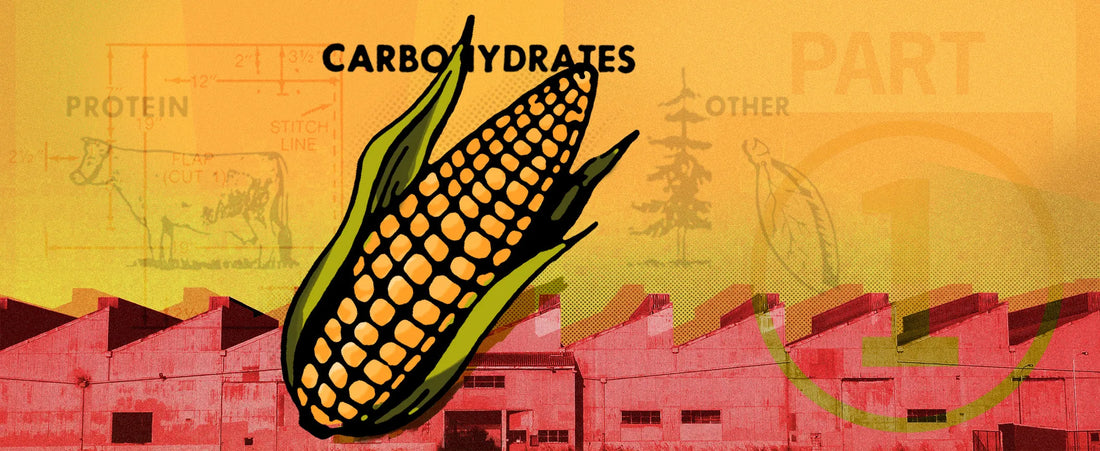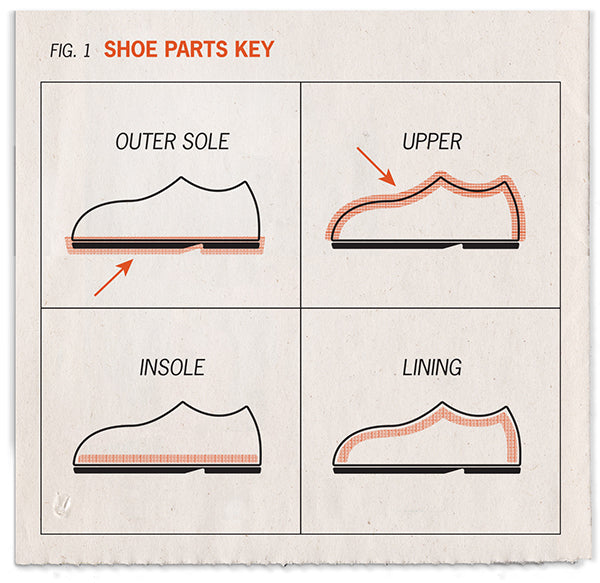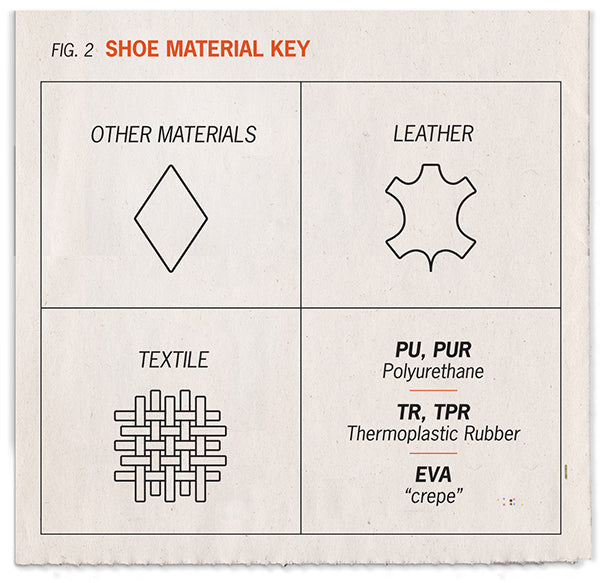
Sustainable Shoes: Part 1 – What are my Shoes Made of?
Share
Have you ever wondered what your shoes (or boots) are made of? I mean all the parts of your shoe: the top part you see, the inside part that your foot rests on, the part that meets the ground?
Many of my customers are interested in buying footwear that is sustainable. That is, they’d like to invest in footwear that, with proper care and upkeep, will last for many years. MooBuzz® All-Natural Leather Protection is an essential part of proper care and upkeep, but the goal of this article is to do more than just sell product. I’d like to help you figure out what type of materials to look for if you want to take sustainability into consideration when you make a footwear purchase.
As a cobbler I have a few reasons to be concerned about what your shoes are made of. Primarily, I need to understand the materials I’m working with so that I can determine whether your shoes can be repaired and, if so, how best to repair them. Secondly, I want to know what your shoes are made of so that I can make them look their best when I clean and polish them before giving them back to you. I’m also concerned about what your shoes are made of because I’d like them to be around for a long time before they end up in a landfill.
In my view, footwear sustainability has two parts: what shoes are made of and how they are made. This article gives the basics on how to figure out what your shoes are made of. In Part 2: How are my shoes made? we discuss how materials and construction methods combine to make shoes more or less sustainable.
Materials:
The materials your shoes are made of will affect a number of things. Principal among them are:- How they look
- How they feel
- How they wear (how long they’ll last)
- The upper – the exterior portion of your footwear that is not the sole. In my experience, sometimes the shaft of a boot is not included in this definition and may be a different material.
- The lining – this is the part of the shoe that is on the inside of the upper. It touches your skin (or your socks).
- The welt – this is the part of a shoe that holds the upper to the sole. Not all shoes have a welt.
- The sole - this is the part of the shoe that touches the ground.
Sometimes manufacturers will give you information about the insole and/or the sock lining in addition to the four areas listed above. Today the terms insole and sock lining are used almost interchangeably and refer to the material inside of the shoe that is directly beneath your foot (your foot rests on it). Many shoes have removable insoles/sock linings. In some footwear the insole is fixed in place.
Where can you find out what your shoes are made of? It could be in one of the following places:
- On the shoe box, if you have it.
- On the bottom of the shoe. Typically shoes that are all leather will have a symbol or wording indicating such on the waist of the shoe. That is, under the arch on the outside of the sole. On some shoes a sticker on the bottom will list the materials.
- On the inside of the shoe, either on the lateral side near the heel counter or under the tongue. Sometimes, when there isn’t much room at the sides, the materials will be listed inside towards the front of the shoe. You might have to look really hard. Sometimes it’s under the tongue of the shoe and barely visible.
- On the manufacturer’s website. This can be difficult if the shoes are no longer made, but you can get a general idea of what kinds of materials that manufacturer tends to use. Sometimes you’ll find this information in the “Details” section of the manufacturer’s online description.
Material information is noted in one of two ways – it’s either written out in words or indicated by some standard symbols.
If it’s written out in words it may be on a sticker or label inside the shoe that says something like, “Leather Upper Balance man-made.” This means that everything other than the upper is made of man-made materials. That includes the lining, insole, and outer sole. Or the label might say “All man-made Materials.” Wording is fairly straightforward. Not incredibly detailed, but understandable.
The symbols, on the other hand, can be a bit cryptic. Typically they appear in a two-column table with a symbol indicating the part of the shoe on the left and the material on the right. Below the symbols may be some information about style, size, and country of origin.
Example:


What does it all mean?
Leather: An animal skin that has been preserved and prepared for use by a chemical treatment called tanning. This can be anything from full-grain leather to a thin suede split. (A useful guide to types of leather)
Textile: A fabric-knit, woven, or nonwoven (e.g., felt) made with either natural or synthetic materials.
Other Materials: Could be anything, typically man-made and typically not leather. Soles can be made of a number of different materials. Here are some abbreviations you may encounter:
PU or PUR: Polyurethane
TR or TPR: Thermoplastic Rubber
EVA: Ethylene Vinyl Acetate (also called ‘crepe’)
Now that you know what your shoes are made of, here are some tips on care:
Shoe and Boot Care:
Unless your shoes or boots are brand new, always clean them before treating them with a polish, waterproofer, or other product.
MooBuzz® Leather Protection is made for use on smooth leather. If you have a suede or textile shoe you will need to use a water and stain protector (often a spray or dauber-type application) specifically formulated for those materials. Many man-made materials don’t need waterproofing.
If your label says leather, try MooBuzz® Leather Protection in an inconspicuous area to see if you like the results. (It may darken light-colored leather.) If you like it, treat your whole shoe or boot.
Exceptions: Suede and Nubuck
MooBuzz® All-Natural Leather Protection isn’t intended for use on suede.
Nubuck is leather, similar to suede but the nap is on the grain side. Because the nap is on the grain side, Nubuck is not as fuzzy as suede and can be made to look similar to smooth leather by applying MooBuzz® Leather Protection. The result is darker, smoother-looking leather. Over time the Nubuck may go back to its original appearance, but the change can be drastic so be sure to test a small area before you apply to your Nubuck to see if you like the look. Putting MooBuzz® Leather Protection on your Nubuck footwear will ensure that it’s conditioned and waterproof and may make it easier to care for in the long run.
Recap – care of shoes and boots:
Smooth Leather – Use MooBuzz® All-Natural Leather Protection (Try it on an inconspicuous area to see if you like how it looks.)
Nubuck – Maybe use MooBuzz® Leather Protection (it will make Nubuck leather look like smooth leather. Try it on an inconspicuous area to see if you like how it looks.)
Suede or Textile – Use a silicone-free water and stain protector made for suede and/or textiles.
Man-made Materials – Wipe with damp cloth.
Want more leather care tips of the trade? Sign up for our newsletter.
